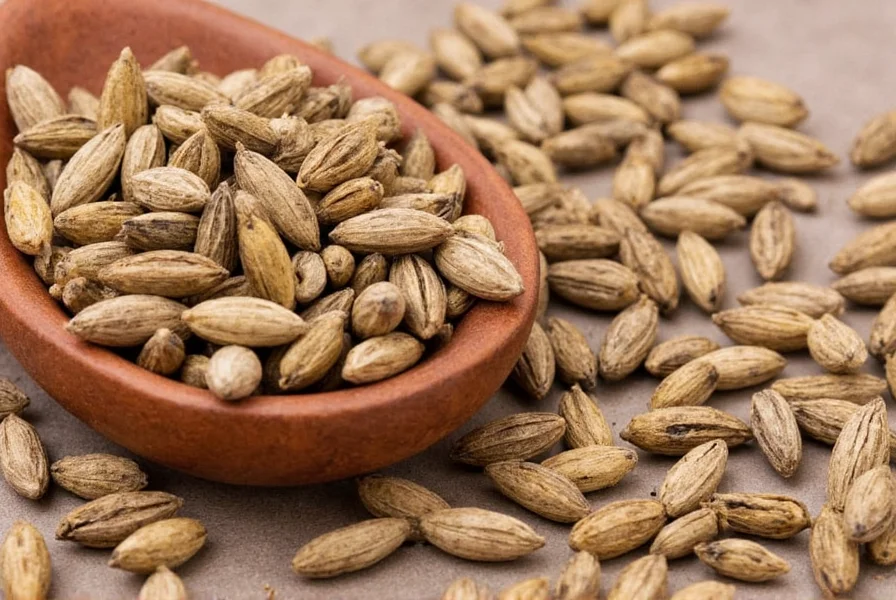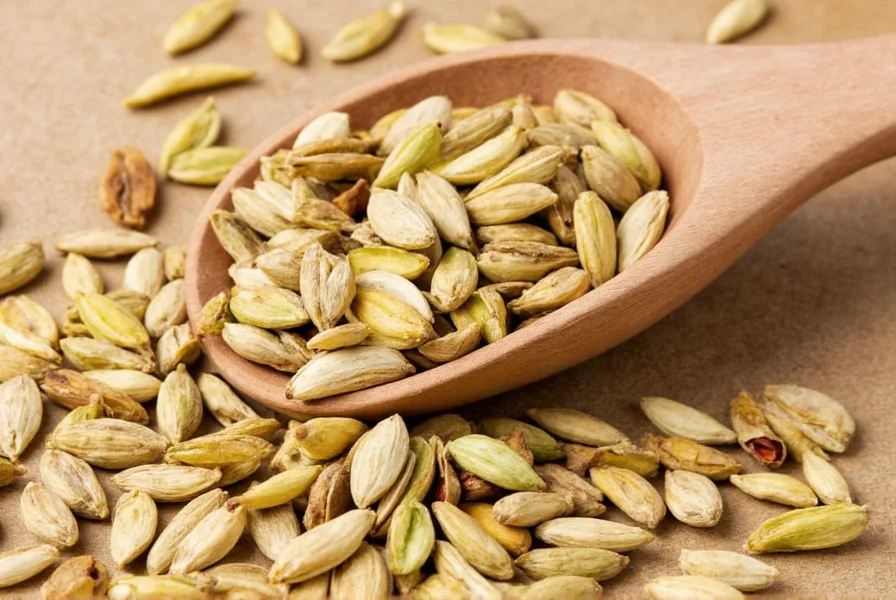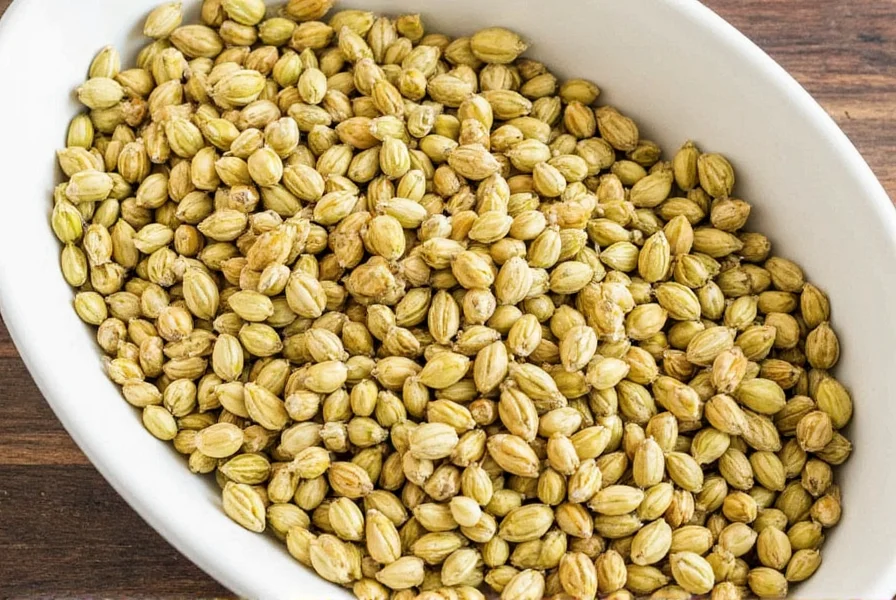Understanding cardamom seeds begins with recognizing their origin within the cardamom pod. These minuscule black seeds cluster together inside the protective outer pod, which serves as both container and preserver of their distinctive aroma. The seeds contain higher concentrations of essential oils than the pod itself, making them particularly valuable for certain culinary applications where maximum flavor impact is desired.
Cardamom Varieties and Their Seeds
Three primary types of cardamom produce seeds with distinct characteristics:
| Type | Seed Characteristics | Best Culinary Uses |
|---|---|---|
| Green Cardamom (Elettaria) | Small, black, intensely aromatic | Baking, chai, rice dishes, Scandinavian pastries |
| Black Cardamom (Amomum) | Larger, smokier, more robust | Indian curries, meat dishes, long-cooking stews |
| Madagascar Cardamom | Milder, citrus-forward | Modern fusion cuisine, delicate desserts |
Extracting and Using Cardamom Seeds
When working with whole cardamom pods, properly accessing the seeds makes a significant difference in flavor extraction. The most effective technique involves gently crushing the pod with the flat side of a knife to release the seeds without damaging them. For recipes specifying how to use cardamom seeds in baking, many professional bakers recommend dry-roasting the seeds for 60-90 seconds before grinding to intensify their aromatic compounds.
Cardamom seeds vs pods difference becomes crucial in recipe execution. While whole pods work well in slow-cooked dishes where they can be removed before serving, extracted seeds provide more immediate flavor infusion. This makes them ideal for baked goods, spice blends, and beverages where uniform distribution of flavor is essential.

Optimal Storage Methods for Cardamom Seeds
The best way to store cardamom seeds involves understanding their vulnerability to environmental factors. Once removed from their protective pods, the seeds begin losing volatile oils more rapidly. For maximum shelf life:
- Store in airtight glass containers away from light
- Maintain consistent cool temperatures (below 70°F/21°C)
- Consider freezing for long-term storage (up to 1 year)
- Grind only what you'll use immediately for peak flavor
Many home cooks mistakenly store cardamom seeds in clear plastic containers on kitchen shelves, significantly reducing their shelf life. The combination of light exposure and oxygen accelerates flavor degradation, resulting in noticeably weaker spice impact in dishes.
Cardamom Seeds in Global Cuisines
The role of cardamom seeds varies dramatically across culinary traditions. In Indian cooking, cardamom seeds frequently appear in garam masala blends and biryani rice dishes, where their intense flavor penetrates grains during long cooking. Scandinavian bakers rely on finely ground cardamom seeds for traditional pastries like kardemummabullar, where the spice's floral notes complement yeast doughs.
For those exploring cardamom seeds in Indian cooking, understanding the timing of seed addition proves critical. In many curry preparations, seeds get tempered in hot oil at the beginning to release essential oils, while in dessert applications like rice pudding, they're often infused in warm milk for gradual flavor extraction.
Evidence-Based Health Properties
While not a substitute for medical treatment, research supports several potential benefits of cardamom seeds. Studies published in the Journal of Agricultural and Food Chemistry indicate cardamom seeds contain significant antioxidant compounds, particularly cineole, which demonstrates anti-inflammatory properties in laboratory settings. Traditional medicinal systems have long utilized cardamom seeds for digestive support, with modern research suggesting potential benefits for oral health and breath freshness.
When evaluating health benefits of cardamom seeds, it's important to distinguish between traditional uses and scientifically supported claims. Most research remains preliminary, conducted in laboratory settings rather than human trials. Consuming cardamom seeds as part of a balanced diet appears safe for most people, but therapeutic claims require more rigorous scientific validation.
Practical Grinding Techniques
Properly grinding cardamom seeds makes a substantial difference in flavor release. The cardamom seeds grinding techniques that yield optimal results include:
- Dry roast seeds briefly (60-90 seconds) in a skillet over medium heat
- Cool completely before grinding (warm seeds create steam that degrades flavor)
- Use a dedicated spice grinder or mortar and pestle for best results
- Grind to fine powder for baking, coarser for some savory applications
Coffee grinders previously used for coffee beans often impart unwanted flavors to delicate spices like cardamom. For serious enthusiasts of spice preparation, maintaining separate grinding equipment for different spice categories preserves flavor integrity.
Finding Quality Cardamom Seeds
When selecting cardamom seeds, look for these quality indicators:
- Deep black color (pale seeds indicate age or poor storage)
- Strong, complex aroma with citrus and floral notes
- Uniform size within batches
- Moisture-free (damp seeds indicate improper storage)
The cardamom seeds buying guide for discerning cooks emphasizes purchasing from specialty spice merchants who can verify harvest dates. Freshness dramatically impacts flavor intensity, with seeds harvested within the past 6-8 months providing optimal results. Avoid pre-ground cardamom whenever possible, as the essential oils dissipate rapidly after grinding.

Substitution Strategies
When you need a cardamom seeds substitute options, consider these alternatives based on your recipe's requirements:
- For baking: Equal parts nutmeg and allspice with a pinch of cloves
- For savory dishes: Cumin and coriander with a touch of citrus zest
- For beverages: Equal parts cinnamon and ginger
While no substitute perfectly replicates cardamom's unique flavor profile, these combinations can provide acceptable alternatives when cardamom seeds aren't available. Remember that cardamom's distinctive character comes from its complex blend of over 100 aromatic compounds, making exact replication impossible with single spices.
Frequently Asked Questions
Can I use cardamom seeds instead of pods in recipes?
Yes, you can substitute cardamom seeds for pods, but with important considerations. Generally, the seeds from one pod equal about 1/8 teaspoon of seeds. Since seeds deliver more concentrated flavor than whole pods, you'll need less when substituting. For best results in recipes specifying how to use cardamom seeds in baking, use 75% of the pod quantity called for when using extracted seeds.
How long do cardamom seeds stay fresh after removing from pods?
Cardamom seeds maintain optimal freshness for 2-3 weeks after extraction when stored in an airtight container away from light and moisture. This is significantly shorter than whole pods, which can remain potent for 6-12 months. For maximum flavor retention, extract seeds immediately before use whenever possible, especially when following precise cardamom seeds grinding techniques.
What's the difference between green and black cardamom seeds?
Green cardamom seeds come from Elettaria pods and have a brighter, more floral citrus flavor profile ideal for sweet applications. Black cardamom seeds from Amomum pods deliver a smokier, more camphorous taste better suited for savory dishes. The cardamom seeds vs pods difference extends to their processing methods, with black cardamom often dried over open flames, contributing to its distinctive smoky character.
Can I grow cardamom plants from the seeds?
While technically possible, growing cardamom from culinary seeds presents challenges. Most commercially available cardamom seeds have been dried and processed for cooking, reducing germination rates. For successful cultivation, obtain fresh, undried seeds from specialty growers. Cardamom requires tropical conditions with high humidity, partial shade, and well-draining soil, making it difficult to grow outside USDA zones 10-12 without controlled greenhouse environments.
Are cardamom seeds safe for daily consumption?
Cardamom seeds are generally recognized as safe for culinary use. Most people can safely consume up to 1-2 grams (about 1/4 teaspoon) daily as part of normal cooking. Those with gallstone issues should consult a healthcare provider before consuming large amounts, as cardamom may stimulate bile production. When evaluating health benefits of cardamom seeds, remember that culinary quantities differ significantly from therapeutic doses studied in research settings.











 浙公网安备
33010002000092号
浙公网安备
33010002000092号 浙B2-20120091-4
浙B2-20120091-4